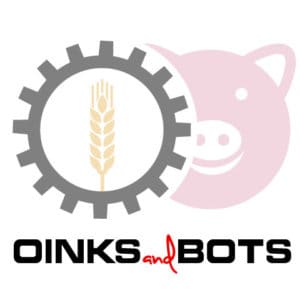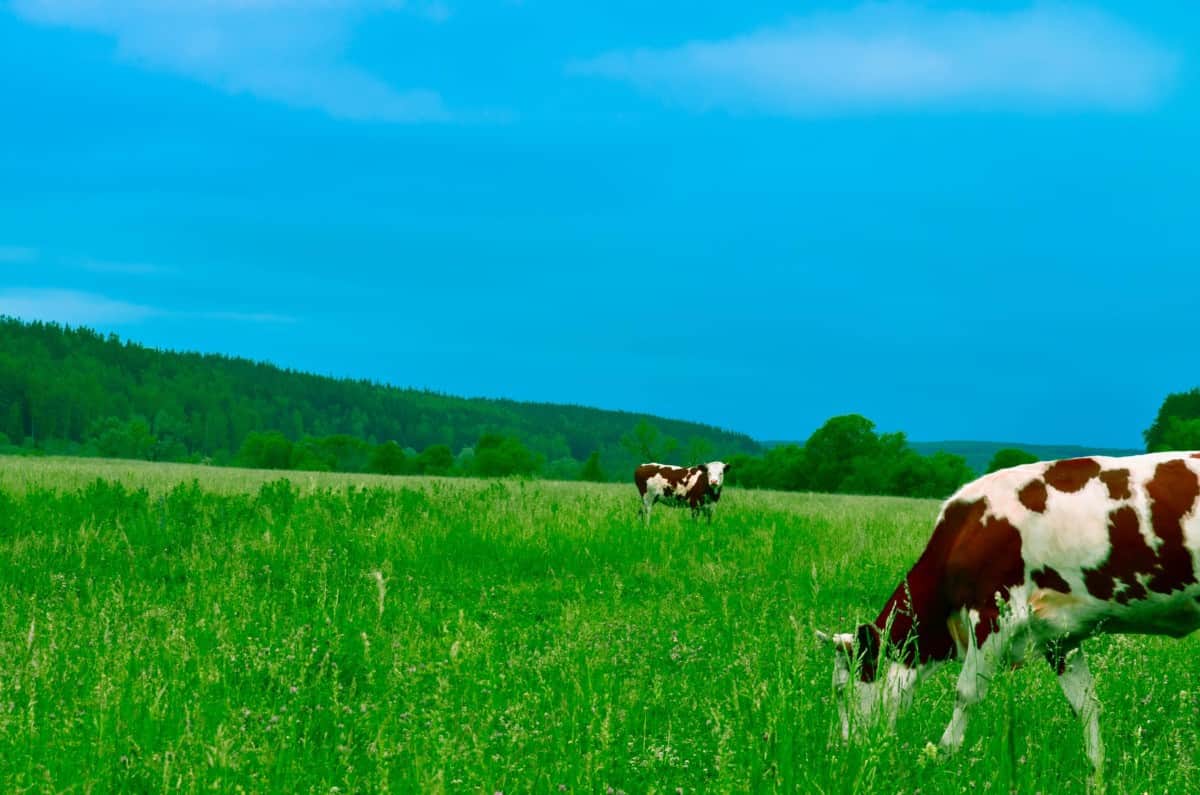Normally we would combine dairy and beef cattle in the one blog post, however on this occasion we will be separating dairy cattle dietary needs. Today we will look at how best to feed your dairy herd in order to maximise your milk production.
There will naturally be variations between region to region and even from field to field. So, we are going to look at what a typical dairy cow needs to thrive across the world. Like sheep, cattle are ruminant feeders, and this will factor into their diet massively.
Also as a disclaimer, though I have worked with vets in the past and have had family members farm dairy cows, I am not an expert and all numbers are general. If ever in doubt contact your local large animal practice and get specific numbers for your herd. But this article should serve as a rough guideline.
Cattle Digestive System
Before we delve into what it is that cattle need for their diet, we need to make sure we understand how cattle are able to digest food. As just said, cattle are ruminant feeders. This means they have a large organ in their digestive system that is called a rumen. This rumen acts as a fermentation tank for the food the cattle consumes. There are bacteria and other micro-organisms that help break this down for your cow. With all this in mind, let’s continue.
Dairy cattle dietary needs can be broken down into 4 sections:
- Water
- Energy
- Protein
- Minerals
More so than in beef production, water is absolutely a must. Cows require about 60 litres of water a day on an average day of 20 degrees Celsius. When the temperature reaches higher, this can easily get up to 100 litres a day.
Naturally with so much water being consumed, you will need to make sure that it does not become contaminated by pathogens. Salmonella and other bacteria can survive for a while and can seep into water supplies from poorly contained slurry pits or landfills.
You should test your water at least once a year by a lab. They will test for bacteria, PH values and any heavy metals that may be in the water.
Energy
As we have stated before, the rumen is a very important element of your dairy cattle. Some 50-80% of the energy produced from food will come from the breakdown of these foods in the rumen. The rest being absorbed in the intestine.
There are some bacteria in the rumen that are vital for the breakdown of cellulose. However, these bacteria cannot survive on just these. Therefore, you will need to add the appropriate sugar, starch and fibre to your dairy cattle’s diet to ensure maximum rumen efficiency.
But you must be careful, having too much in:
- Sugar and starch can lead to having fat cows. This can also lead to a chemical imbalance in the blood called acidosis. This means that the blood is now too acidic, and this can lead to a host of other problems such as kidney failure.
- Fibre can lead to your dairy cattle can lead to them becoming fuller. This will reduce the amount of food consumed over all and so you run the risk of them not getting enough other nutrients.
- Fat can lead to poor fibre digestion and overfilling, similar to too much fibre.
But you must be careful, having too little in:
- Sugar and starch can lead to low production of milk and think cows. This can lead to starvation and eventual death.
- Fibre can lead to a risk in acidosis, similar to having too much sugar and starch in the diet and displacing your dairy cattle’s abomasum. This is the fourth and final part of your ruminant digestive system.
Protein
Protein is needed by all animals to build up and maintain their bodies. In beef cattle, it is needed to ensure they put on enough weight. In dairy cattle, it is important for both the development of your calf and also the production of milk through lactation. The amount of protein your dairy cow needs very much depends on what stage of pregnancy she is at.
A mature cow at a weight of 1300 lbs (600ish kgs) producing about 90 lbs of milk with 3.5% fat will need 0.9 lbs or about 0.5 kgs of protein to maintain her own weight and 7.5 lbs or about 3.45 kgs for milk production. If your cow is consuming 50 lbs or 23 kgs of dry matter, 17% of this needs to be protein.
During the early stages of lactation, some farmers say to overcompensate for protein to make sure that she does not lose weight in producing milk. This may be especially useful for first time mothers or those with a history of losing substantial weight in the first few weeks of lactation.
Minerals
Like pigs and sheep there are some minerals that dairy cattle need in order to maintain their health and also their milk production. And like beef cattle, there are micro and microminerals that are needed to keep your dairy cattle healthy.
Macrominerals
Macrominerals are minerals that are needed in large concentrations. For dairy cattle there are five macrominerals that need to be taken into consideration. These would be calcium, phosphorous, magnesium, potassium and sulphur.
Calcium and Phosphorous
The calcium and phosphorous required by your dairy cattle will fluctuate during their lactation periods. The minerals use by your pregnant cows must also be replenished before they begin another calving season.
The calcium needs for your cattle are also quite important during what is called the late dry period. The dry period broadly means a cow that is not producing milk. In this case it would be because she is in late stage pregnancy. Your dairy cow’s calcium needs are important at this point because it can induce milk fever. Milk fever (hypocalcaemia) is where the blood concentration of calcium drops to dangerous levels.
To avoid complications, your dairy cow will need 0.39% of your dry matter to be calcium during the dry period. This should build up her calcium levels to high enough concentrations that you have less risk of having milk fever upon lactating. Once your dairy cattle begins lactating, you may need to provide more calcium as providing over 0.39% often substantially increases milk production. This can be raised up to 0.8%.
Phosphorous is needed not just for milk production but also bone strength and its energy metabolism. It is also responsible for pregnancy rates, calf development and calf growth. However, there are problems to overfeeding phosphorous as it can lead to pollution from excretion in manure and also a dramatic increase in your food bill as it is one of the more expensive elements of your dairy cattle’s diet.
Phosphorous is in a relationship with calcium and so needs to be served in a ration. The ratio is between 1.4:1 (one point four to one) and 2.5:1 (two point five to one). This means with the above figures, you would need 0.24% phosphorous if you are providing 0.39% calcium in your dry matter diet. Or in the case of 0.8%, you will need 0.5% phosphorous. These ratios should work for the maximum health and production of your dairy cattle, during both the dry and lactating periods.
Magnesium
For your dairy producing cows, this would be 0.25-0.3% of your dry matter diet. During early lactation and early spring (when the grass is growing at its fastest), you may need to increase your magnesium to the higher end to prevent grass tetany. You will also need to preform a soil test to measure levels of magnesium in your soil. If they are naturally low, you will need to supplement your herd’s diet. Supplements such as magnesium oxide (56% magnesium) or dynamate (12% magnesium) should be fed when soil levels are low
Potassium and Sulphur
Legumes can be used as a protein source and also as a source for both potassium and sulphur.
For potassium you would want between 0.9% to 1% of your dairy cattle’s diet. If you cattle are in hot environments or undergo heat stress, this may need to be increased to 1.3% to 1.5%.
For Sulphur, you would want 0.2%-0.25%. Many salts contain traces of sulphur and so supplementing for sulphur is not recommended unless there is a known deficiency. Over feeding sulphur can lead to copper absorption problems and molybdenum toxicity.
Sodium Chloride (salt)
Cattle need quite a bit of salt in their diet but luckily this is easy to come by. You can add 1% to your grain mix and then have a salt bloc available as needed. Lactating cows will need 2-4 ounces of salt a day whereas dry cows will need 1.5. If you have issues with udder edema, reduce salt intake a couple of weeks prior to calving and that will reduce the risks.
Microminerals
These are minerals that are needed in less quantities than macrominerals. Adding trace mineralized salt to your grain mixture will more than likely take care of the following microminerals:
- Cobalt
- Copper
- Iodine
- Iron
- Manganese
- Selenium
- Zinc
- Cobalt
Most dry feed will more than cover this micromineral and no supplement will be required.
Copper
Most mineralized salt will cover your copper needs but if you want premade feed with copper in it, you will want to look out for sources such as copper sulphate.
Iodine
This is important for hormone production. Your dairy cattle will need 12 milligrams daily but going over 50 is dangerous as this will leak over to the milk of the cow. This can be at toxic levels for human consumption. You will notice nasal discharge and watery eyes if there is an overdose issue.
Iron
Only for the first couple of months of a calf’s life are they susceptible to iron deficiency. Most feed provides more than enough iron for your cattle needs.
Manganese
You will likely need to supplement for manganese for your high producing cows, using a mineralized salt should more than cover for it.
Selenium
This is a chemical that is important for your dairy cattle’s health and you will need 3-5 milligrams per day. A deficiency in this can lead to what is known as white muscle disease in your calves. However, you will need to be careful, as a rise in selenium can be toxic.
Zinc
Zinc can be good for hoof production and milk production. However, zinc can act as an antagonistic to copper and iron. If you have excess zinc in your dairy herd’s diet it can lead to copper and iron deficiency.

